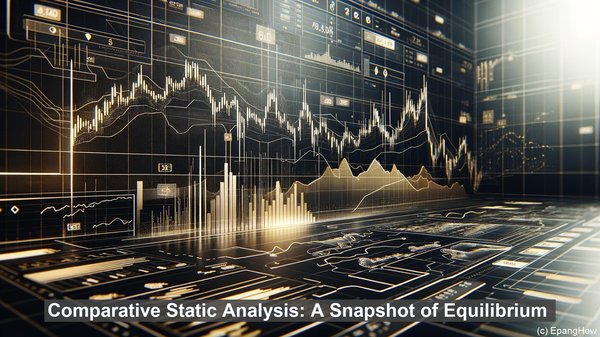Introduction: The Essence of Analysis
Analysis, in its essence, is the process of breaking down a complex system into its constituent parts to gain a deeper understanding of its functioning. By examining the relationships and interactions between these components, we can unravel the underlying mechanisms and predict the system’s behavior under different conditions.
Comparative Static Analysis: A Snapshot of Equilibrium
Comparative static analysis, as the name suggests, focuses on comparing different states of a system at a particular point in time. It assumes that the system is in equilibrium, meaning that all variables have settled into a stable state. By examining the changes in variables and their interdependencies, comparative static analysis provides insights into the system’s response to external factors. This technique is particularly useful in studying economic models, where it helps determine the impact of policy changes or market shifts on key variables.
Dynamic Analysis: Unraveling the System’s Evolution
In contrast to comparative static analysis, dynamic analysis takes into account the system’s evolution over time. It acknowledges that variables are not static but rather subject to continuous change. By modeling the system’s behavior through differential equations or discrete-time models, dynamic analysis enables us to simulate and predict its trajectory. This technique finds extensive applications in fields such as engineering, where it aids in designing control systems or predicting the response of a structure to external forces.
The Time Dimension: A Key Divergence
One of the fundamental differences between comparative static analysis and dynamic analysis lies in their treatment of time. While comparative static analysis focuses on a single point in time, dynamic analysis considers the system’s behavior over a span of time. This temporal dimension in dynamic analysis allows for a more comprehensive understanding of the system’s dynamics and its response to various inputs.

Assumptions and Limitations: The Fine Print
Every analysis technique comes with its set of assumptions and limitations. Comparative static analysis assumes that the system is in equilibrium and that the changes being examined are small and incremental. Dynamic analysis, on the other hand, assumes that the system’s behavior can be accurately modeled using the chosen mathematical framework. Additionally, dynamic analysis can be computationally intensive, especially for complex systems with numerous variables and interactions.

Complementary Approaches: When to Use What
Rather than being mutually exclusive, comparative static analysis and dynamic analysis are often used in tandem, with each offering unique insights. Comparative static analysis is valuable for quick assessments and policy evaluations, providing a snapshot of the system’s response. Dynamic analysis, with its temporal dimension, is essential for understanding long-term trends, system stability, and the impact of feedback loops. By combining these approaches, analysts can gain a more holistic understanding of the system under study.
